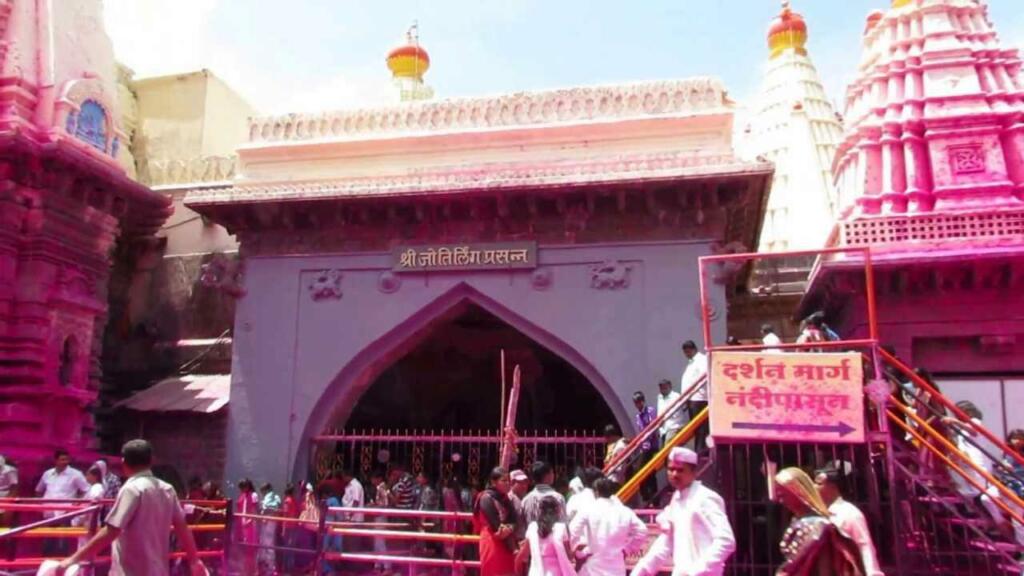Jyotiba Temple, Kolhapur – Overview
Jyotiba is a sacred temple located at an altitude of 3124 ft above sea level in the Panhala hill range in Kolhapur district. This temple is an important religious site for Hindus. The presiding deity of this temple is Jyotiba and he is believed to be an incarnation of the three deities. Brahma, Vishnu, Shiva. Jyotiba Temple is about 20 km from Kolhapur. It is believed that after visiting the Mahalakshmi temple, one should visit this temple.
Also Read: ISKCON Temple Bangalore, Timings, Travel Guide, History and How to reach
History of this Temple
After defeating the dreaded demon Kolhasur and other demons, the goddess of wealth decided to settle down in Kolhapur. To enhance the defense of his empire, he appointed four guards around Kolhapur. The most important protector was Jyotiba, Mahalakshmi appointed Jyotiba in the north direction. Since then Jyotiba is also known as ‘Kedareshwar’ or ‘Dakkahancha Raja’.
According to historians, Navaji Saya originally built Jyotiba Temple. In the year 1730, Ranoji Scindia rebuilt the temple to its present form. The second temple of Kedareshwar was built by Daulatrao Scindia in 1808. 1780 by Malji Neelam Panhalkar
Best time to visit this Temple
Jyotiba is a great place to enjoy the natural beauty of the place during winter or rainy season. If you want to avoid the crowd at the temple, it is best to visit during the afternoon. Otherwise devotees can travel during Chaitra Purnima which is “Ekadashi” when a grand fair takes place.
Also Read: Walkeshwar Temple, Mumbai Timings, History, Travel Guide, and How to reach
Place to visit near Jyotiba Temple
Dajipur Wildlife Sanctuary
Dajipur Wildlife Sanctuary is one of the best places to visit in Kolhapur for wildlife and nature lovers. Various wildlife species like bison, leopard, tiger, sloth bear, deer will be seen along with the scenic views. This place was declared as a wildlife sanctuary in 1985. It is also known as Bison Sanctuary, as this place is most popular for Indian Bison or Gaur.
Sagareshwar Wildlife Sanctuary
Sagareshwar Wildlife Sanctuary is a unique area in Kolhapur district which is a man-made forest. Spread over an area of about 11 square kilometres, the sanctuary also houses wildlife artificially introduced into the amphitheater. The sanctuary boasts of a rich flora and fauna which makes it one of the best places to visit in Kolhapur.
Kalamba Lake
One of the most attractive places to visit in Kolhapur is Kalamba Lake which is spread over 63 hectares. It is the major source of water for the entire city and also a major tourist spot of the city which attracts thousands of tourists every year. Lake Katyayani originates from the hill and the cool flowing water comes close to the city. On this lake, a lot of migratory birds flock during the winter season and add to the charm of the place.
Also Read: Kasthabhanjan Hanumanji Sarangpur Temple Travel Guide and History
How to reach Jyotiba Temple
By Air- There is no direct flight connectivity to Kolhapur. Pune International Airport and Goa Airport are the two nearest airports to Kolhapur which are located at a distance of about 240 and 221 km from Kolhapur. From here you can easily reach Jyotiba Temple by using local services.
By Train- Kolhapur has its own Chhatrapati Shahu Maharaj railway station, which is located on the Pune-Miraj-Kolhapur section of the Central Railway. Daily trains are available for Kolhapur railway station from cities like Mumbai, Nagpur, Pune, Tirupati, and also train are available from the different parts of the country. From here you can easily reach this temple by using local services.
By Road– Kolhapur is situated on National Highway 4 which connects Mumbai and Bangalore. From Mumbai, Kolhapur is approximately 8 hours drive while from Pune it is approximately 3 hours. There are state-run buses from Pune and Mumbai that leave for Kolhapur every half an hour. There are also private buses to Kolhapur from different parts of country.
Subscribe our TFI Dharma YouTube channel to watch Devotional videos because we are here to serve Sanatana Dhrama: TFIDHARMA
